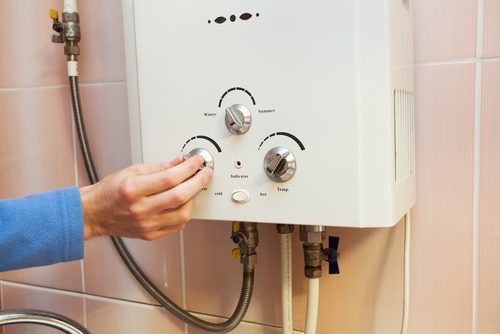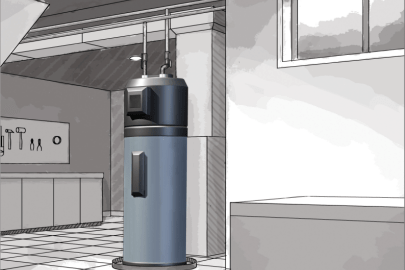What're your concepts on How to Maintain Your Water Heater & Prolong its Life?

Warm water is vital for daily convenience, whether it's for a refreshing shower or cleaning recipes. To guarantee your warm water system runs successfully and lasts longer, normal maintenance is crucial. This post gives practical tips and understandings on exactly how to keep your home's hot water system to prevent disturbances and costly repair services.
Introduction
Preserving your home's warm water system might appear difficult, but with a few straightforward steps, you can guarantee it runs smoothly for several years to find. This overview covers every little thing from understanding your warm water system to do it yourself maintenance suggestions and understanding when to call in expert aid.
Value of Keeping Your Hot Water System
Regular upkeep not only extends the life expectancy of your warm water system yet also ensures it runs efficiently. Overlooking maintenance can cause lowered efficiency, greater power costs, and also premature failure of the system.
Indications Your Warm Water System Requirements Maintenance
Recognizing when your hot water system requires attention can stop significant concerns. Watch out for indications such as irregular water temperature level, odd sounds from the heater, or rustic water.
Comprehending Your Hot Water System
Prior to diving into upkeep tasks, it's practical to understand the fundamental parts of your warm water system. Typically, this includes the hot water heater itself, pipelines, anode poles, and temperature level controls.
Monthly Maintenance Tasks
Routine regular monthly checks can aid capture small problems before they intensify.
Flushing the Hot Water Heater
Purging your hot water heater gets rid of sediment accumulation, enhancing efficiency and lengthening its life.
Monitoring and Replacing Anode Rods
Anode rods protect against corrosion inside the container. Inspecting and replacing them when broken is critical.
Inspecting and Changing Temperature Settings
Adjusting the temperature level settings makes certain ideal performance and safety and security.
Do It Yourself Tips for Maintenance
You can do a number of maintenance jobs on your own to maintain your hot water system in leading condition.
Checking for Leaks
Regularly check pipes and connections for leaks, as these can bring about water damages and greater costs.
Examining Pressure Alleviation Valves
Checking the pressure safety valve ensures it operates correctly and protects against too much pressure buildup.
Insulating Pipes
Insulating warm water pipelines reduces warmth loss and can save power.
When to Call a Professional
While DIY maintenance is beneficial, some problems call for specialist expertise.
Complex Issues Needing Professional Help
Examples include major leakages, electric issues, or if your water heater is continually underperforming.
Routine Specialist Upkeep Advantages
Professional maintenance can consist of complete inspections, tune-ups, and guaranteeing compliance with safety and security standards.
Verdict
Regular upkeep of your home's hot water system is necessary for performance, long life, and price financial savings. By following these pointers and recognizing when to look for specialist assistance, you can make sure a dependable supply of warm water without unexpected interruptions.
How to Maintain an Instant Hot Water Heater
Before tinkering with your hot water heater, make sure that it’s not powered on. You also have to turn off the main circuit breaker and shut off the main gas line to prevent accidents. Also turn off the water valves connected to your unit to prevent water from flowing into and out of the appliance. 2. When you’re done, you have to detach the purge valves’ caps. These look like the letter “T” and are situated on either side of the water valves. Doing so will release any pressure that has accumulated inside the valves while at the same time avoid hot water from shooting out and burning your skin. 3. When the purge valves’ caps are removed, you have to connect your hosing lines to the valves. Your unit should have come with three hoses but if it didn’t, you can purchase these things from any hardware or home repair shops. You can also get them from retail stores that sell water heating systems. Read the user’s manual and follow it to complete this task properly. When the hosing lines are connected, open the purge port’s valves. 4. You should never use harsh chemical cleaners or solutions when cleaning your unit. Make use of white vinegar instead. It should be undiluted and you’ll probably use about 2 gallons. 5. Now flush your water heater. This task should probably take about 40 minutes. We can’t give you specific directions for this because the procedure is carried out depending on the type, model and brand of your heater. With that being said, refer to the user’s manual. 6. When you’re done draining the unit, you have to turn off the purge port valves again. Remove the hosing lines that you earlier installed on each of the water valves. Put the valve caps (purge port) back in their respective places and be very careful so as not to damage the rubber discs that are found inside these caps. 7. Now that everything’s back in place, check your user’s manual again to find out how to reactivate your water heating system. 8. Once it is working, turn one of your hot water faucets on just to let air pass through the heater’s water supply pipes. Leave the tap on until water flows smoothly out of it. https://www.orrplumbing.com/blog/2014/september/how-to-maintain-an-instant-hot-water-heater/

As a serious reader on How to Maintain a Hot Water Heater in a Few Simple Steps, I thought sharing that topic was sensible. Are you aware of another individual who is occupied with Tips For Maintaining Your Hot Water Heater? Please feel free to share it. We recognize the value of your readership.
Click Here